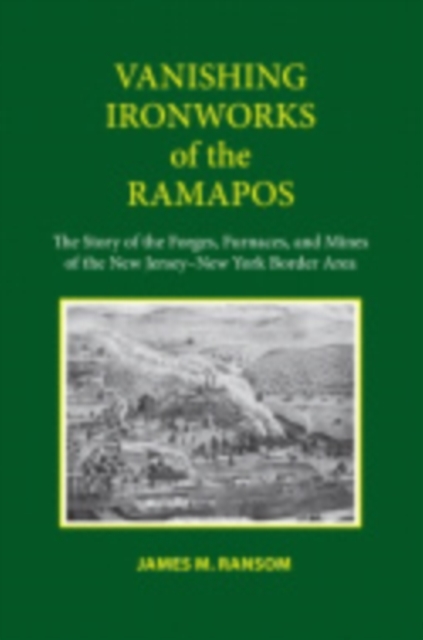Vanishing Ironworks of the Ramapos: The Story of the Forges, Furnaces, and Mines of the New Jersey-New York Border Area

Vanishing Ironworks of the Ramapos: The Story of the Forges, Furnaces, and Mines of the New Jersey-New York Border Area
This is the story of early iron mining and manufacturing, and what remains to be seen today, in the hills that cross the northeastern border of New Jersey into New York. Centrally located in the Colonies, New Jersey was in an especially advantageous position: its waterways provided power and excellent transportation and its dense forests furnished the charcoal essential for making pig and bar iron. During the two major wars on American soil New Jersey and New York ironworks turned out badly needed supplies--among them the huge chains and booms used to block the British advance up the Hudson during the Revolution--and ordnance, made and shipped in record-breaking time, for Union troops.
This is also the story of the hardy men who made this industry possible--where they came from, what their homes and company towns were like, how they lived, and how they left their mark on American history.
James M. Ransom spent twenty-five years inspecting remains of mines (seventy-five are described and located), furnaces and forges, dams and millraces, and other ruins closely associated with iron production in the Ramapo region. But not all was on-site research. He also searched through old account books, newspapers, and records, evaluating their historical importance. When word spread of his intense interest in the field, he was offered material unknown to historians--in particular, a collection of old ledgers, some dating back two hundred years, and a group of rare photographs from 1865 to 1905. From such extensive investigation, Ransom uncovered previously unknown facts, filled in gaps, and corrected mistakes made by earlier writers on the subject.
PRP: 284.89 Lei
Acesta este Prețul Recomandat de Producător. Prețul de vânzare al produsului este afișat mai jos.
227.91Lei
227.91Lei
284.89 LeiLivrare in 2-4 saptamani
Descrierea produsului
This is the story of early iron mining and manufacturing, and what remains to be seen today, in the hills that cross the northeastern border of New Jersey into New York. Centrally located in the Colonies, New Jersey was in an especially advantageous position: its waterways provided power and excellent transportation and its dense forests furnished the charcoal essential for making pig and bar iron. During the two major wars on American soil New Jersey and New York ironworks turned out badly needed supplies--among them the huge chains and booms used to block the British advance up the Hudson during the Revolution--and ordnance, made and shipped in record-breaking time, for Union troops.
This is also the story of the hardy men who made this industry possible--where they came from, what their homes and company towns were like, how they lived, and how they left their mark on American history.
James M. Ransom spent twenty-five years inspecting remains of mines (seventy-five are described and located), furnaces and forges, dams and millraces, and other ruins closely associated with iron production in the Ramapo region. But not all was on-site research. He also searched through old account books, newspapers, and records, evaluating their historical importance. When word spread of his intense interest in the field, he was offered material unknown to historians--in particular, a collection of old ledgers, some dating back two hundred years, and a group of rare photographs from 1865 to 1905. From such extensive investigation, Ransom uncovered previously unknown facts, filled in gaps, and corrected mistakes made by earlier writers on the subject.
Detaliile produsului










